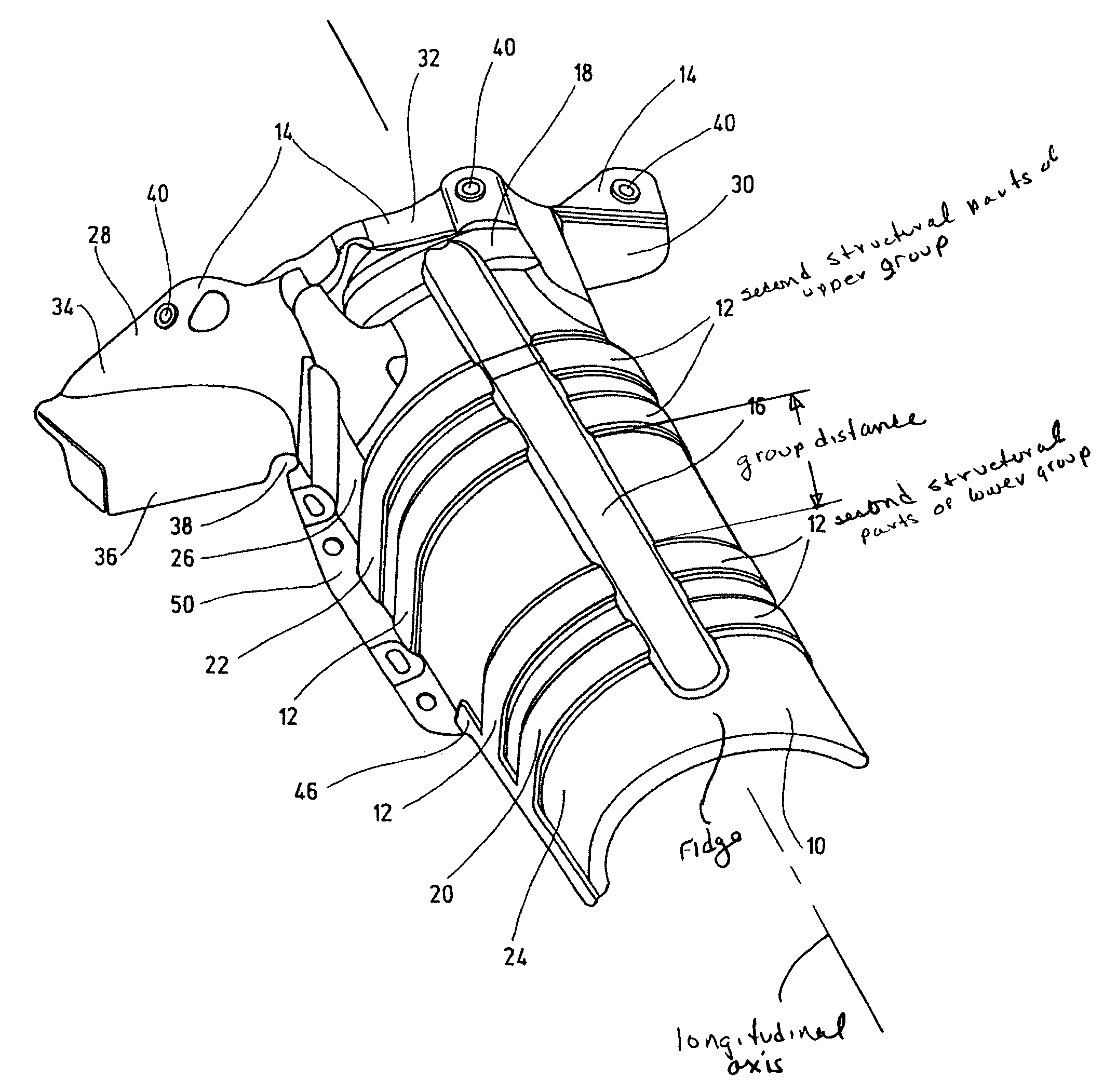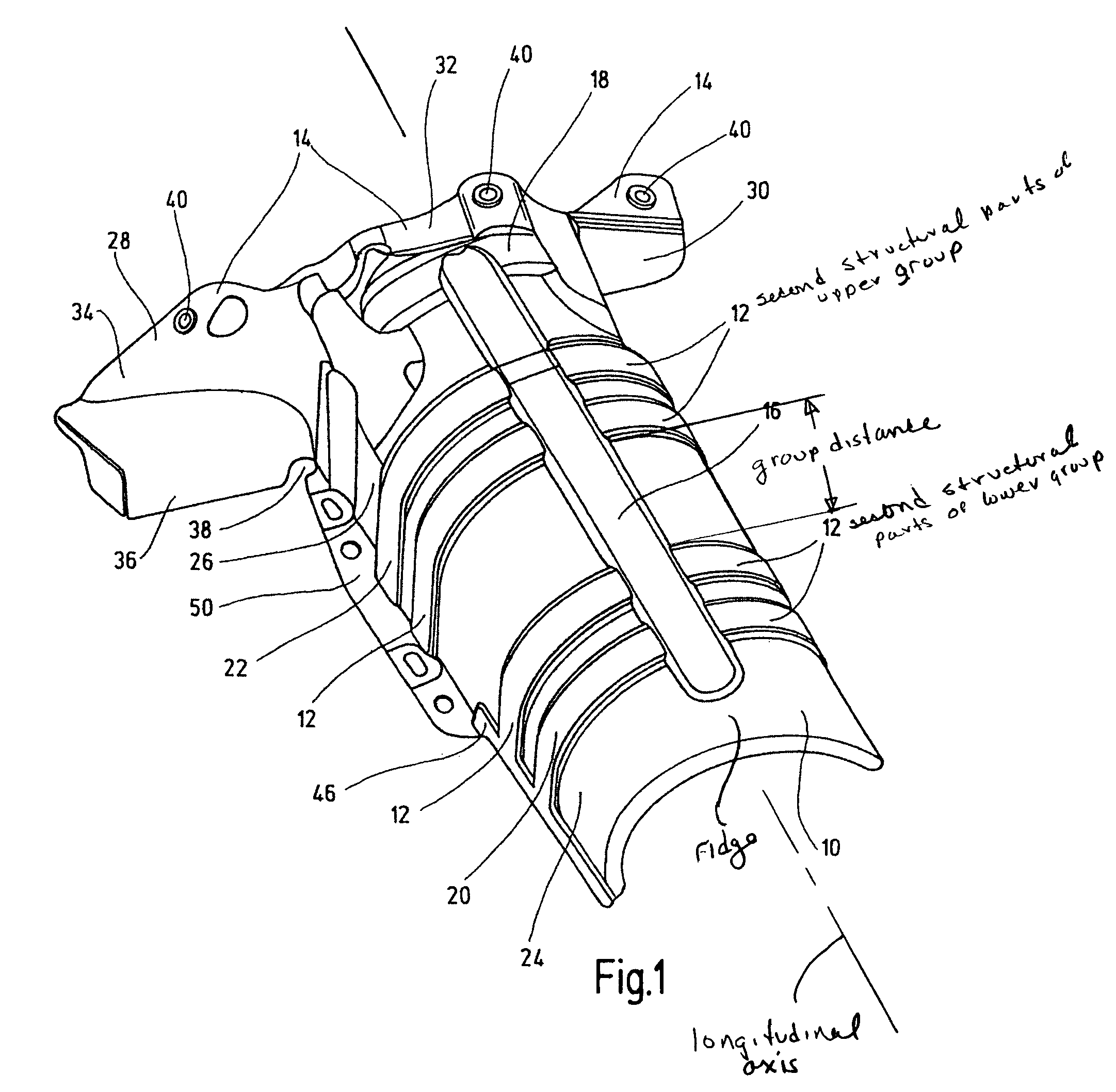Structural component, in particular a lubricating component
a technology of structural components and lubricating components, applied in mechanical equipment, transportation and packaging, gearing details, etc., can solve the problems of limited application of known structural components, limited installation space, and inability to apply low heat development to “hot zones” and other problems, to achieve the effect of less installation space, good acoustic, and increased stiffness and strength
- Summary
- Abstract
- Description
- Claims
- Application Information
AI Technical Summary
Benefits of technology
Problems solved by technology
Method used
Image
Examples
Embodiment Construction
[0017]An exemplary embodiment of the present invention relates to a structural component, especially a shielding component, for use in motor vehicles with structural parts 10, 12, 14, 16, 18 of different types. The structural parts are at least in part differently configured with respect to their surface extent and / or the directional pattern. At least one structural part 10 of a first type is formed as a half-shell with an essentially uniform curvature. Structural parts 12 of a second type are paired into groups 20, 22, and extend transversely to the longitudinal orientation of the structural part of the first type 10.
[0018]Two groups 20, 22 are provided with four structural parts 12 of the second type each. The two groups 20, 22, in the longitudinal orientation of the structural part 10 of the first type, are spaced apart from one another and are located in the end areas 24, 26 thereof. Consequently, the two end areas 24, 26 of the structural part 10 of the first type are formed di...
PUM
 Login to View More
Login to View More Abstract
Description
Claims
Application Information
 Login to View More
Login to View More - R&D
- Intellectual Property
- Life Sciences
- Materials
- Tech Scout
- Unparalleled Data Quality
- Higher Quality Content
- 60% Fewer Hallucinations
Browse by: Latest US Patents, China's latest patents, Technical Efficacy Thesaurus, Application Domain, Technology Topic, Popular Technical Reports.
© 2025 PatSnap. All rights reserved.Legal|Privacy policy|Modern Slavery Act Transparency Statement|Sitemap|About US| Contact US: help@patsnap.com



